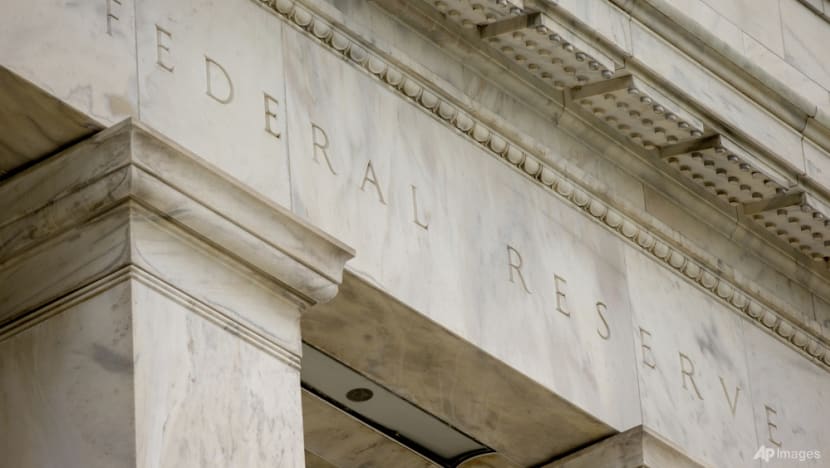CNA Explains: What does a Fed rate cut mean for you in Singapore?
The decision by the US Federal Reserve is set to have far-reaching implications beyond America, from influencing monetary policies, financial markets to consumer mortgages and saving rates around the world.


This audio is generated by an AI tool.
SINGAPORE: The Federal Reserve has lowered interest rates for the first time in four years – and in a big way.
The United States central bank on Wednesday (Sep 18) announced a 50-basis-point reduction in its key lending rate to between 4.75 per cent and 5 per cent. While a rate cut was largely anticipated, the size of it came as a surprise for some.
“Historically, 50-basis-point cuts have been used during emergencies so this aggressive move by the Federal Reserve is indeed a surprise,” said Mr Koh Siong Qun, head of investment advisory at Wrise Private Singapore.
The latest move by one of the world’s most influential central banks is set to have far-reaching implications beyond America, from influencing monetary policies, financial markets to consumer mortgages and saving rates around the world.
Experts tell CNA how this will affect you in Singapore.
Why is the Fed cutting rates?
The Fed’s rate-setting committee is largely focused on two things: Inflation and the job market.
A surge in inflation brought about largely by the COVID-19 pandemic set the Fed on a tightening spree between March 2022 and July 2023, raising rates from near zero to a multi-decade high range of 5.25 per cent to 5.5 per cent.
The US central bank then stood pat for more than a year, as it sought to pull inflation back down to its target of 2 per cent.
The drop in the US consumer price index – down to 2.5 per cent in August, its lowest since 2021 - has boosted the central bank’s confidence that its fight against inflation is nearly over. Based on updated projections released on Wednesday, Fed policymakers are expecting a lower headline inflation rate of 2.3 per cent for this year.
But as inflation subsided, concerns around the labour market have emerged as unemployment figures rose to 4.2 per cent from 3.7 per cent at the start of the year.
Fed officials are now expecting the unemployment rate to end this year at 4.4 per cent, higher than the current 4.2 per cent, and remaining there through 2025.
Mr Kerry Craig, global market strategist at JP Morgan Asset Management, said the rate cut on Wednesday suggests a key shift in the Fed’s priorities from controlling inflation to “a jobs-first approach”.
Experts from BMI, a unit of Fitch Solutions, echoed that.
“The higher unemployment rate and lower inflation forecasts are consistent with a more aggressive start to the easing cycle than we had anticipated,” a report from BMI said.
Related:
What does it mean for Singapore?
Singapore’s interest rates are largely influenced by global rates and tend to broadly follow the direction of other central banks, especially the Fed.
“Since Singapore interest rates typically follow US interest rates, we are likely entering a lower interest rate environment,” said Mr Koh.
Already, returns on banks’ fixed deposits and government securities such as Treasury bills (T-bills), which are sensitive to interest rate changes, have fallen over the course of the year in anticipation of the Fed’s rate cut.
For example, the latest six-month T-bill gave a yield of 3.1 per cent, much lower than the 3.7 per cent seen at the start of this year and the 30-year peak of 4.4 per cent in December 2022.
With the Fed’s rate cut now a done deal, returns on these safer investment options are set to see further declines of at least 0.4 to 0.5 percentage points, said Mr Elijah Lee, senior financial services manager at Phillip Securities.
Likewise, for savers who have been enjoying excellent returns from banks’ savings accounts, the good times may finally be coming to an end.
“I do expect some revision for high-yield savings accounts as 50 basis points was larger than most expected,” said Mr Lee, adding that banks could start making adjustments to their interest rates by the fourth quarter of this year.
Similarly, some mortgage rates offered by banks here have been declining in anticipation of the change in monetary policy.
In particular, fixed-rate home loans – which have interest rates that remain unchanged throughout a lock-in period – now average around 2.6 per cent. This is down from around 3 per cent at the start of this year, according to SingCapital’s chief executive officer Alfred Chia.
With the Fed’s rate cut already priced in, the outlook for such fixed rate home loans will depend more on market competition.
Mr Chia described competition among banks as stiff at the moment, as a lack of major new private property launches has crimped loan demand.
“Banks now need to compete for a smaller pool of business, so this might see downward pressure on mortgage rates,” he said, although he added that homeowners should still exercise prudence and consider their own risk profiles and life plans before taking up a loan.
For Singapore stock market investors, analysts said the start of a rate cycle could be a boon.
“A lower interest rate environment will likely benefit Singapore’s stock market,” said Mr Koh, citing real estate investment trusts (REITS) as a potential market outperformer.
Singapore's three local banks, which have chalked up record-breaking profits last year on the back of higher interest rates, are not expected to take a hit due to strong balance sheets.
“Given the smaller size of Singapore’s stock market and limited investment alternatives, banks will likely remain a preferred choice for investors,” Mr Koh said.
Will there be more rate cuts?
Market experts are generally expecting the Fed to have more rate cuts in mind, possibly up to 2026 although the trajectory could change with developments in the labour market and the upcoming US election.
“If the unemployment rate were to stabilise at some point in the year ahead, that might provide the Fed with a reason to slow or even stop additional rate cuts,” said HSBC Global Research.
For now, the bank’s analysts are expecting the US central bank to cut rates by 25 basis points at each of the next six policy meetings. This will take the federal funds target range down to 3.25 to 3.5 per cent by next June, they said.
Eastspring Investments noted that the pace of future rate cuts will depend on how quickly the US labour market weakens, among other factors.
“The Fed has room to cut rates to help prevent a significant contraction in the US economy,” it said.















